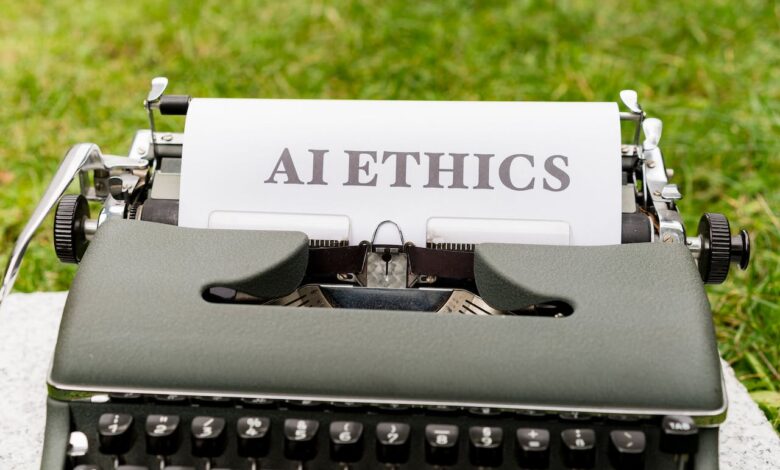
As the conversation around the future of AI grows, the debate concerning AI governance is heating up. Some believe that companies using or procuring AI-powered tools should be allowed to self-regulate, while others feel that stricter legislation from the government is necessary.
The pressing need for some governance in the rapidly growing AI landscape is evident.
The Rise of AI: A New Generation of Innovation
There are numerous applications of AI, but one of the most innovative and well-known organizations in the field of artificial intelligence is OpenAI. OpenAI gained notoriety after its natural language processor (NLP), ChatGPT, went viral. Since then, several OpenAI technologies have become quite successful.
Many other companies have dedicated more time, research, and money to seek a similar success story. In 2023 alone, spending on AI is expected to reach $154 billion (rsm dotglobal), a 27% increase from the previous year. Since the release of ChatGPT, AI has gone from being on the periphery to something that nearly everyone in the world is aware of.
Its popularity can be attributed to a variety of factors, including its potential to improve \ the output of a company. Surveys show that when workers improve their digital skills and work collaboratively with AI tools, they can increase productivity, boost team performance, and enhance their problem-solving capabilities.
After seeing such positive publishing, many companies in various industries — from manufacturing and finance to healthcare and logistics — are using AI. With AI seemingly becoming the new norm overnight, many are concerned about rapid implementation leading to technology dependence, privacy issues, and other ethical concerns.
The Ethics of AI: Do We Need AI Regulations?
With OpenAI’s rapid success, there has been increased discourse from lawmakers, regulators, and the general public over safety and ethical implications. Some favor further ethical growth in AI production, while others believe that individuals and companies should be free to use AI as they please to allow for more significant innovations.
If left unchecked, many experts believe the following issues will arise.
- Bias and discrimination: Companies claim AI helps eliminate bias because robots can’t discriminate, but AI-powered systems are only as fair and unbiased as the information fed into them. AI tools will only amplify and perpetuate those biases if the data humans use when coding AI is already biased.
- Human agency: Many are they’ll build a dependence on AI, which may affect their privacy and power of choice regarding control over their lives.
- Data abuse: AI can help combat cybercrime in an increasingly digital world. AI has the power to analyze much larger quantities of data, which can enable these systems to recognize patterns that could indicate a potential threat. However, there is the concern that companies will also use AI to gather data that can be used to abuse and manipulate people and consumers. This leads to whether AI is making people more or less secure (forgerock dotcom).
- The spread of misinformation: Because AI is not human, it doesn’t understand right or wrong. As such, AI can inadvertently spread false and misleading information, which is particularly dangerous in today’s era of social media.
- Lack of transparency: Most AI systems operate like “black boxes.” This means no one is ever fully aware of how or why these tools arrive at certain decisions. This leads to a lack of transparency and concerns about accountability.
- Job loss: One of the biggest concerns within the workforce is job displacement. While AI can enhance what workers are capable of, many are concerned that employers will simply choose to replace their employees entirely, choosing profit over ethics.
- Mayhem: Overall, there is a general concern that if AI is not regulated, it will lead to mass mayhem, such as weaponized information, cybercrime, and autonomous weapons.
To combat these concerns, experts are pushing for more ethical solutions, such as making humanity’s interests a top priority over the interests of AI and its benefits. The key, many believe, is to prioritize humans when implementing AI technologies continually. AI should never seek to replace, manipulate, or control humans but rather to work collaboratively with them to enhance what is possible. And one of the best ways to do this is to find a balance between AI innovation and AI governance. T
AI Governance: Self-Regulation vs. Government Legislation
When it comes to developing policies about AI, the question is: Who exactly should regulate or control ethical risks of AI (lytics dotcom)?
Should it be the companies themselves and their stakeholders? Or should the government step in to create sweeping policies requiring everyone to abide by the same rules and regulations?
In addition to determining who should regulate, there are questions of what exactly should be regulated and how. These are the three main challenges of AI governance.
Who Should Regulate?
Some believe that the government doesn’t understand how to get AI oversight right. Based on the government’s previous attempts to regulate digital platforms, the rules they create are insufficiently agile to deal with the velocity of technological development, such as AI.
So, instead, some believe that we should allow companies using AI to act as pseudo-governments, making their own rules to govern AI. However, this self-regulatory approach has led to many well-known harms, such as data privacy issues, user manipulation, and spreading of hate, lies, and misinformation.
Despite ongoing debate, organizations and government leaders are already taking steps to regulate the use of AI. The E.U. Parliament, for example, has already taken an important step toward establishing comprehensive AI regulations. And in the U.S. Senate, Majority Leader Chuck Schumer is leading in outlining a broad plan for regulating AI. The White House Office of Science and Technology has also already started creating the Blueprint for an AI Bill of Rights.
As for self-regulation, four leading AI companies are already banning together to create a self-governing regulatory agency. Microsoft, Google, OpenAI, and Anthropic all recently announced the launch of the Frontier Model Forum to ensure companies are engaged in the safe and responsible use and development of AI systems.
What Should Be Regulated and How?
There is also the challenge of determining precisely what should be regulated — things like safety and transparency being some of the primary concerns. In response to this concern, the National Institute of Standards and Technology (NIST) has established a baseline for safe AI practices in their Framework for AI Risk Management.
The federal government believes that the use of licenses can help how AI can be regulated. Licensing can work as a tool for regulatory oversight but can have its drawbacks, such as working as more of a “one size fits all” solution when AI and the effects of digital technology are not uniform.
The EU’s response to this is a more agile, risk-based AI regulatory framework that allows for a multi-layered approach that better addresses the varied use cases for AI. Based on an assessment of the level of risk, different expectations will be enforced.
Wrapping Up
Unfortunately, there isn’t really a solid answer yet for who should regulate and how. Numerous options and methods are still being explored. That said, the CEO of OpenAI, Sam Altman, has endorsed the idea of a federal agency dedicated explicitly to AI oversight. Microsoft and Meta have also previously endorsed the concept of a national AI regulator.
However, until a solid decision is reached, it is considered best practice for companies using AI to do so as responsibly as possible. All organizations are legally required to operate under a Duty of Care. If any company is found to violate this, legal ramifications could ensue.
It is clear that regulatory practices are a must — there is no exception. So, for now, it is up to companies to determine the best way to walk that tightrope between protecting the public’s interest and promoting investment and innovation.
Featured Image Credit: Markus Winkler; Pexels
Source link




